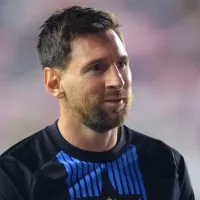In conjunction with Amazon, World Soccer Talk brings you a comprehensive list of the top 18 football books on the beautiful game. If you’re looking for something to read, pick from any of the following recommended books.
At the foot of each book entry is a link to purchase the book from Amazon, as well as a a link for you to participate in a book discussion group. I encourage each of you who have read any of the books listed below, or who are currently reading them, to post questions, observations and book reviews so that the entire World Soccer Talk reader community can participate. Just one note: Please don’t post any spoilers for those who are currently reading the books.
Plus, you can listen to interviews with some of the authors below as they discuss their book and other intelligent football topics.
Here are the top 20 recommended football books:
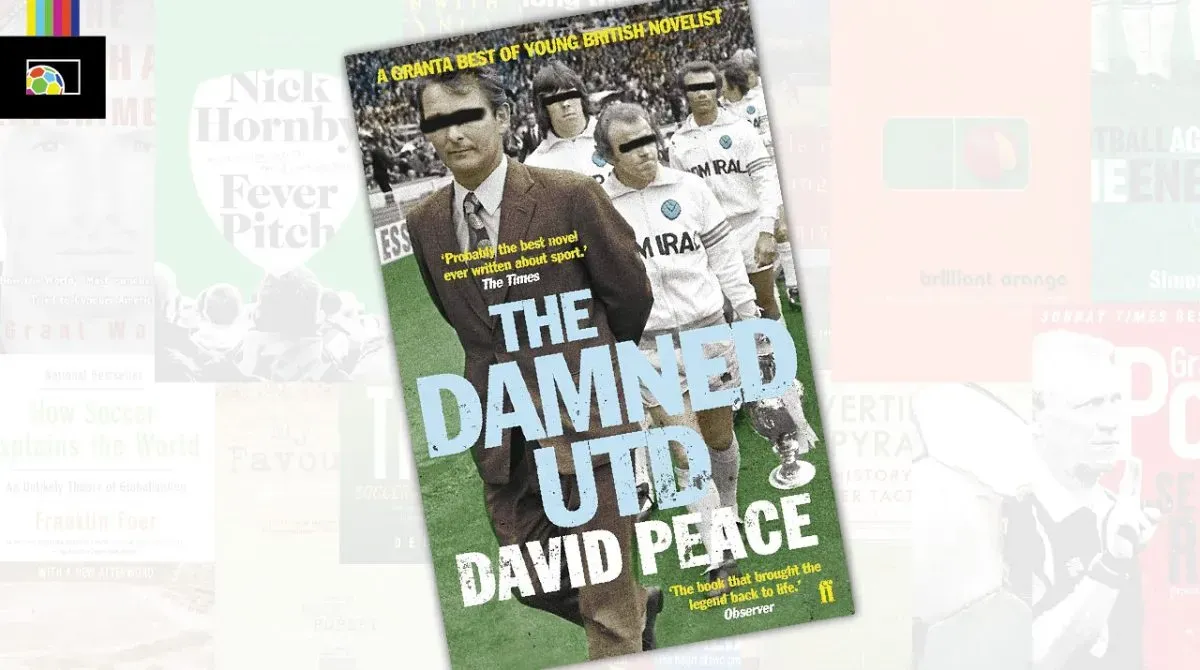
by David Peace. Overachieving and eccentric football manager Brian Clough was on his way to take over at the country’s most successful, and most reviled, football club: Leeds United, home to a generation of fiercely competitive but aging players. The battle he’d face there would make or break the club – or him. David Peace’s extraordinarily inventive novel tells the story of a world characterized by fear of failure and hunger for success set in the bleak heart of the 1970s.
2. Standing On The Shoulders Of Giants

by Søren Frank. Standing on the Shoulders of Giants looks back across the entire history of Manchester United, from its very beginnings as Newton Heath LYR FC in 1878 through to the Red Devils of the 2012/13 season. It will be how the team adapts to the challenges it now faces that will decide more than Cup wins or Championships could. Will it reconnect to the past and the continuity of ideals that have supported the team throughout the years, the Manchester United ‘brand’, or run to the future in a different direction?
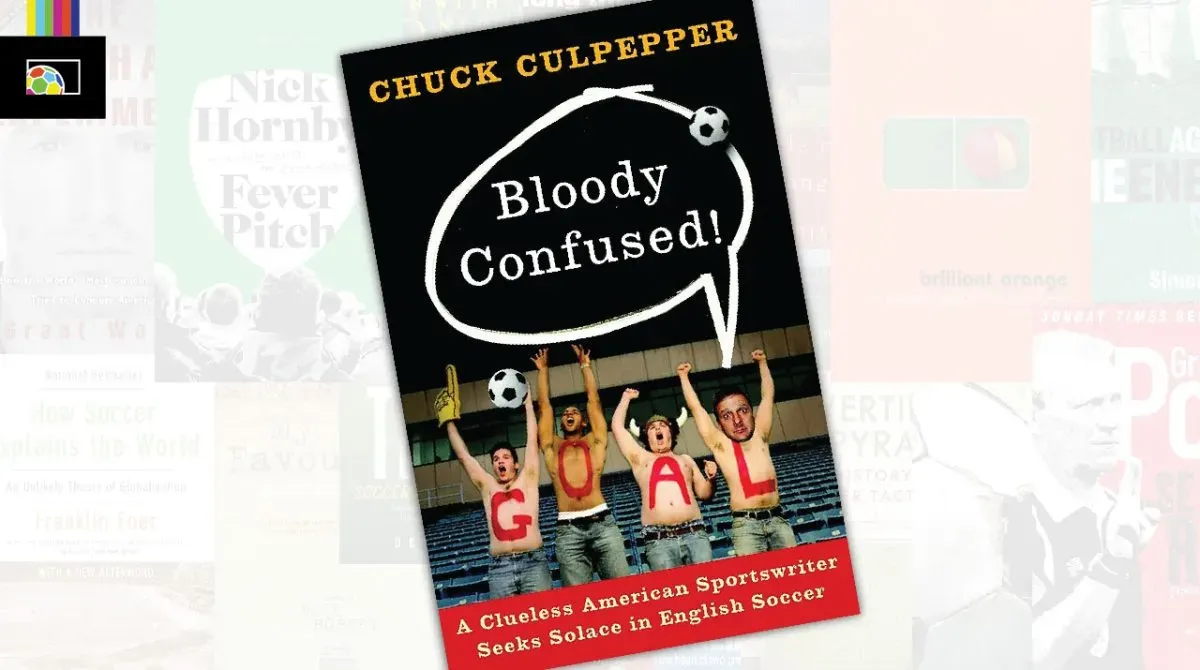
by Chuck Culpepper. In the throes of becoming jaded and cynical about the American sportswriting scene, Culpepper, a London-based Los Angeles Times journalist covering European sporting events, writes about the internationally known Premiership soccer league and its overzealous fans. The rough-and tumble British soccer sport quickly captivates Culpepper, who wrote on American sports for 15 years, as he learns the rivalries between the fans and teams such as Manchester United, Chelsea, Liverpool and Portsmouth.
4. The Fix
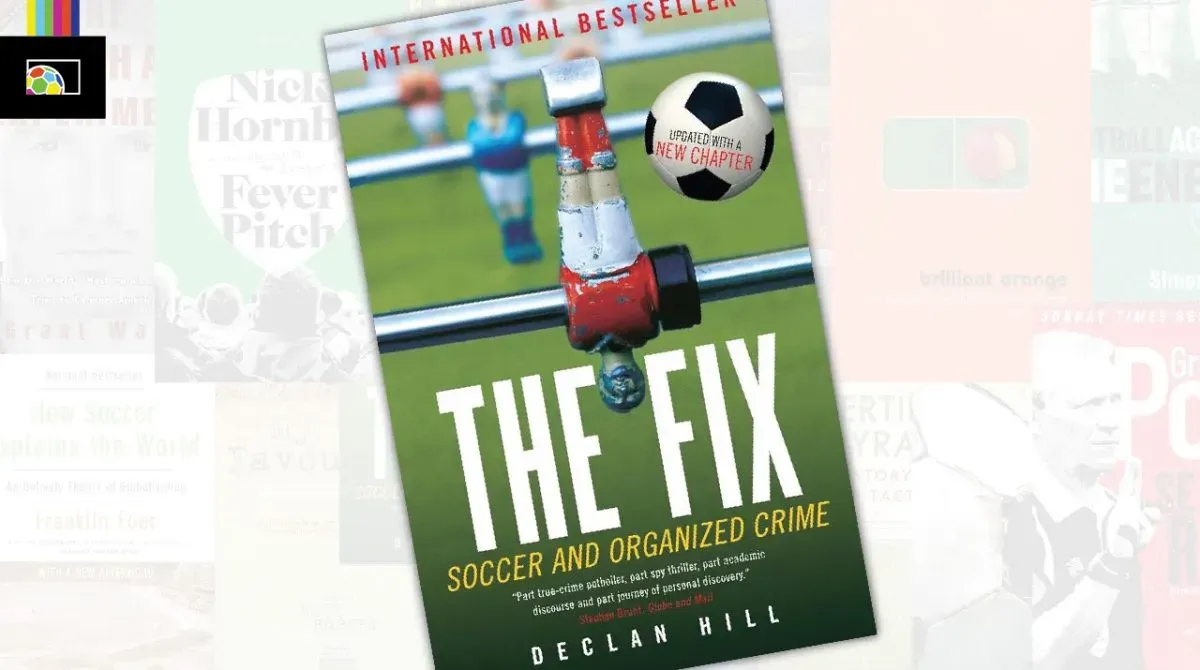
by Declan Hill. The Fix is the most explosive story of sports corruption in a generation. Intriguing, riveting, and compelling, it tells the story of an investigative journalist who sets out to examine the world of match-fixing in professional soccer.
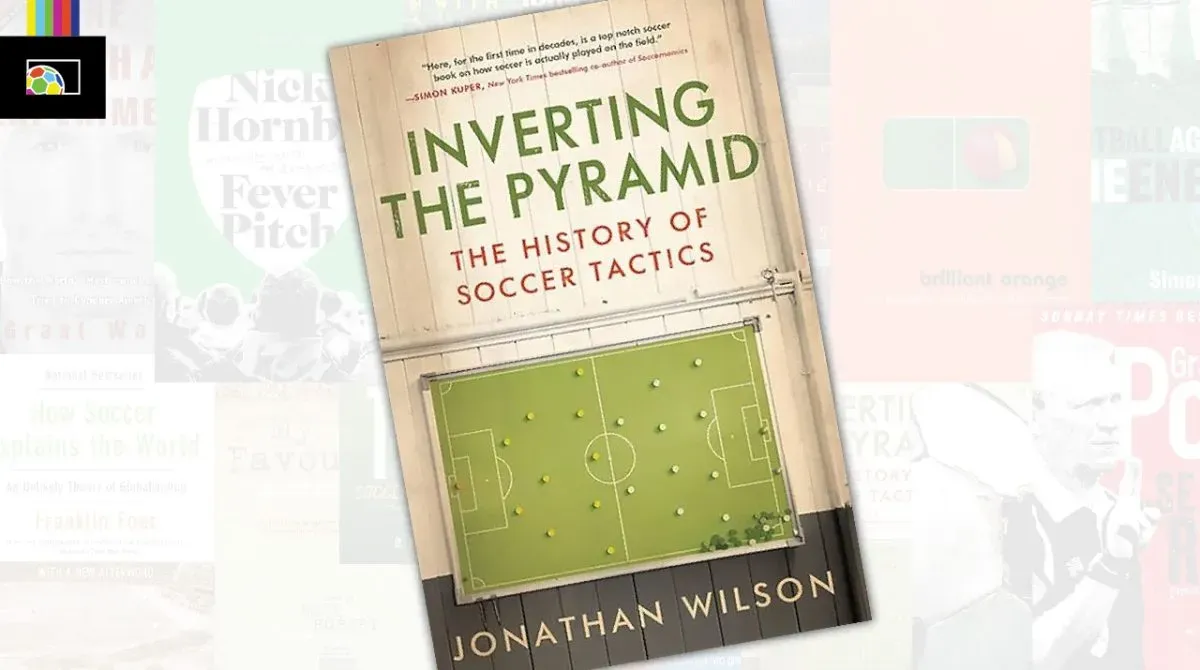
by Jonathan Wilson. Soccer fans love to argue about the tactics a manager puts into play, and this fascinating study traces the world history of tactics, from modern pioneers right back to the beginning, where chaos reigned. Along the way, author Jonathan Wilson, an erudite and detailed writer who never loses a sense of the grand narrative sweep, takes a look at the lives of the great players and thinkers who shaped the game, and discovers why the English, in particular, have proved themselves so “unwilling to grapple with the abstract.” This is a modern classic of soccer writing that followers of the game will dip into again and again.
6. The Miracle Of Castel di Sangro
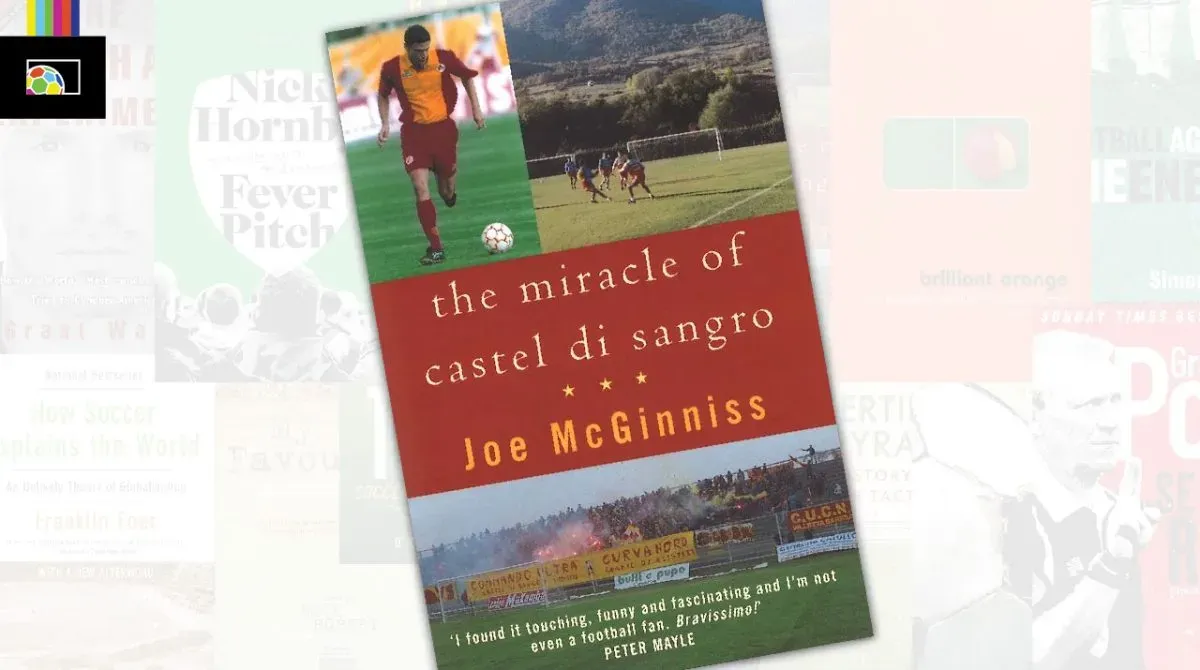
by Joe McGinniss. With the growing popularity of soccer in North America, McGinniss has written the rags-to-riches story of how an Italian soccer team, Castel di Sangro from the Abruzzi region, rose through the ranks from the very bottom (Terza Categoria) to the Serie BAa remarkable feat. There are eight steps to reach the world’s best league, the Serie A. The Italian press was motivated by the achievement of Castel di Sangro, referring to the club as the “Lilliputi.” More than a mere history of the team’s improbable season, this book provides the reader with insights into the passionate world of Italian soccer. The journey documents the trials and tribulations surrounding a professional sports team.
7. How Soccer Explains The World
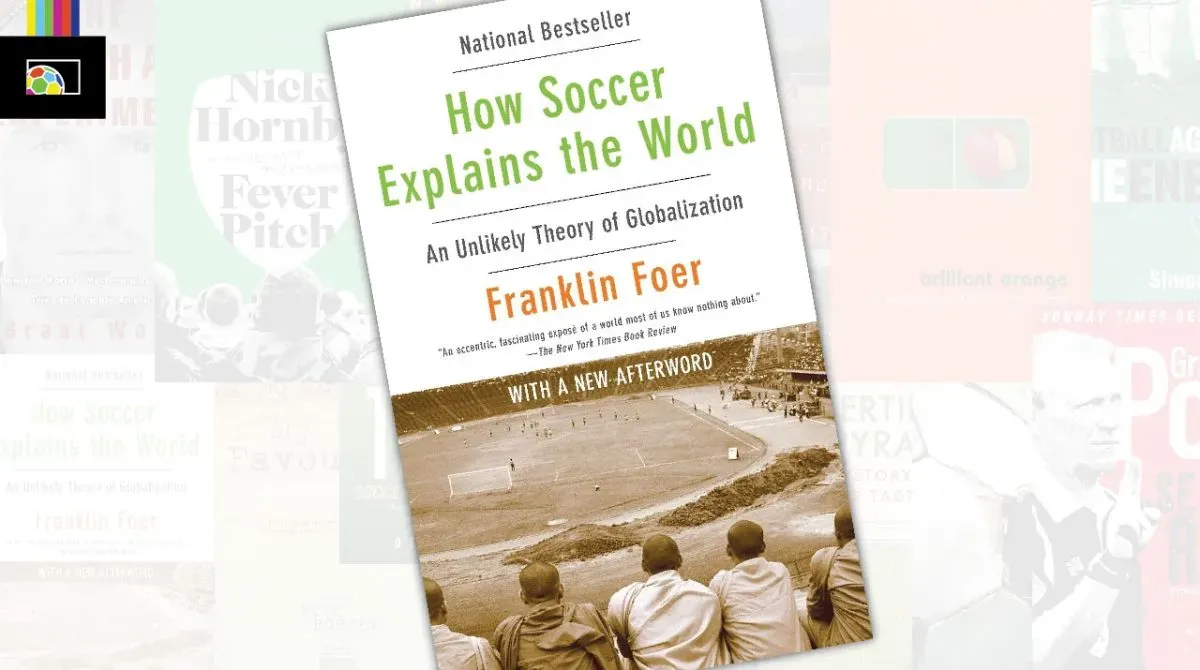
by Franklin Foer. The global power of soccer might be a little hard for Americans, living in a country that views the game with the same skepticism used for the metric system and the threat of killer bees, to grasp fully. But in Europe, South America, and elsewhere, soccer is not merely a pastime but often an expression of the social, economic, political, and racial composition of the communities that host both the teams and their throngs of enthusiastic fans.
New Republic editor Franklin Foer, a lifelong devotee of soccer dating from his own inept youth playing days to an adulthood of obsessive fandom, examines soccer’s role in various cultures as a means of examining the reach of globalization. Foer’s approach is long on soccer reportage, providing extensive history and fascinating interviews on the Rangers-Celtic rivalry and the inner workings of AC Milan, and light on direct discussion of issues like world trade and the exportation of Western culture.
8. Fever Pitch
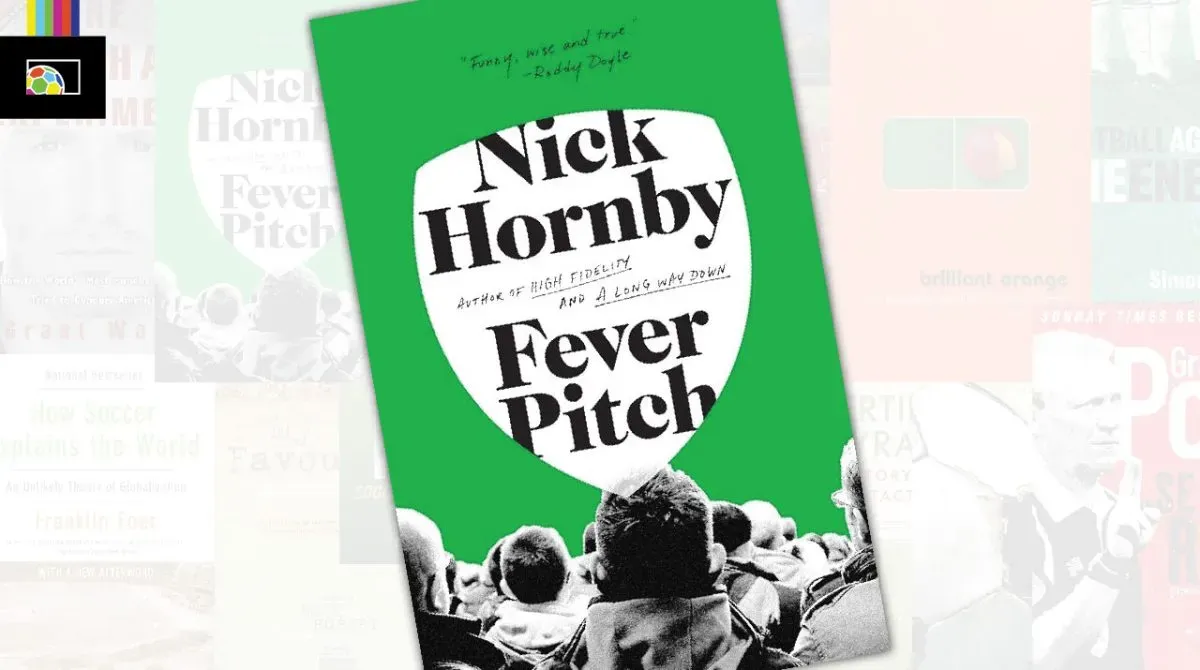
by Nick Hornby. Fever Pitch is not a typical memoir–there are no chapters, just a series of match reports falling into three time frames (childhood, young adulthood, manhood). While watching the May 2, 1972, Reading v. Arsenal match, it became embarrassingly obvious to the then 15-year-old that his white, suburban, middle-class roots made him a wimp with no sense of identity: “Yorkshire men, Lancastrians, Scots, the Irish, blacks, the rich, the poor, even Americans and Australians have something they can sit in pubs and bars and weep about.” But a boy from Maidenhead could only dream of coming from a place with “its own tube station and West Indian community and terrible, insoluble social problems.”
9. The Ball Is Round: A Global History Of Soccer

by David Goldblatt. There may be no cultural practice more global than soccer. Rites of birth and marriage are infinitely diverse, but the rules of soccer are universal. No world religion can match its geographical scope. The single greatest simultaneous human collective experience is the World Cup final. In this extraordinary tour de force, David Goldblatt tells the full story of soccer’s rise from chaotic folk ritual to the world’s most popular sport-now poised to fully establish itself in the USA. Already celebrated internationally, The Ball Is Round illuminates soccer’s role in the political and social histories of modern societies, but never loses sight of the beauty, joy, and excitement of the game itself.
10. Brilliant Orange
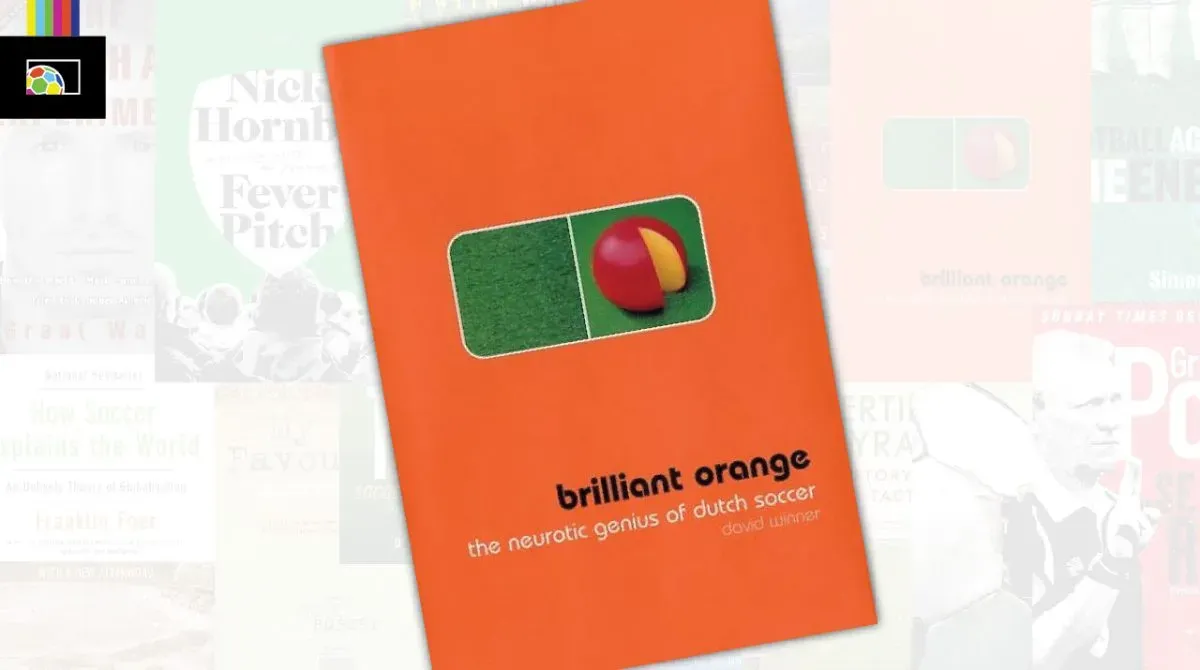
by David Winner. Soccer fans will not want to miss this chronicle of the rise of Total Football (soccer, of course, is known as football everywhere but in North America). What is Total Football? Here you have to get a little philosophical; you have to learn to handle phrases like “a new theory of flexible space” to wrap your mind around the idea that a football pitch isn’t merely a big rectangle. The Dutch, who invented Total Football about three decades ago, are, according to Winner, a nation of special neurotics.
Because space is always at a premium in their small country, they’ve learned to use it in wildly innovative ways. This is seen in their architecture, their art, their society–and their soccer. While other teams were playing the traditional every-player-in-his-position style of game, the plucky Dutch team called Ajax began playing a whole new game based on position-switching: defenders would suddenly become attackers and vice versa, thus substantially reducing the amount of repetitive back-and-forth running. This technique was revolutionary for its time (the 1960s), and it propelled Holland to the top of the soccer world. This extremely well written and exciting book, like Nick Hornby’s immensely enjoyable Fever Pitch (1993), catches us up in its enthusiasm and puts us right there in the grandstands cheering for the Dutch coaches and players who changed the game of soccer forever.
11. Seeing Red
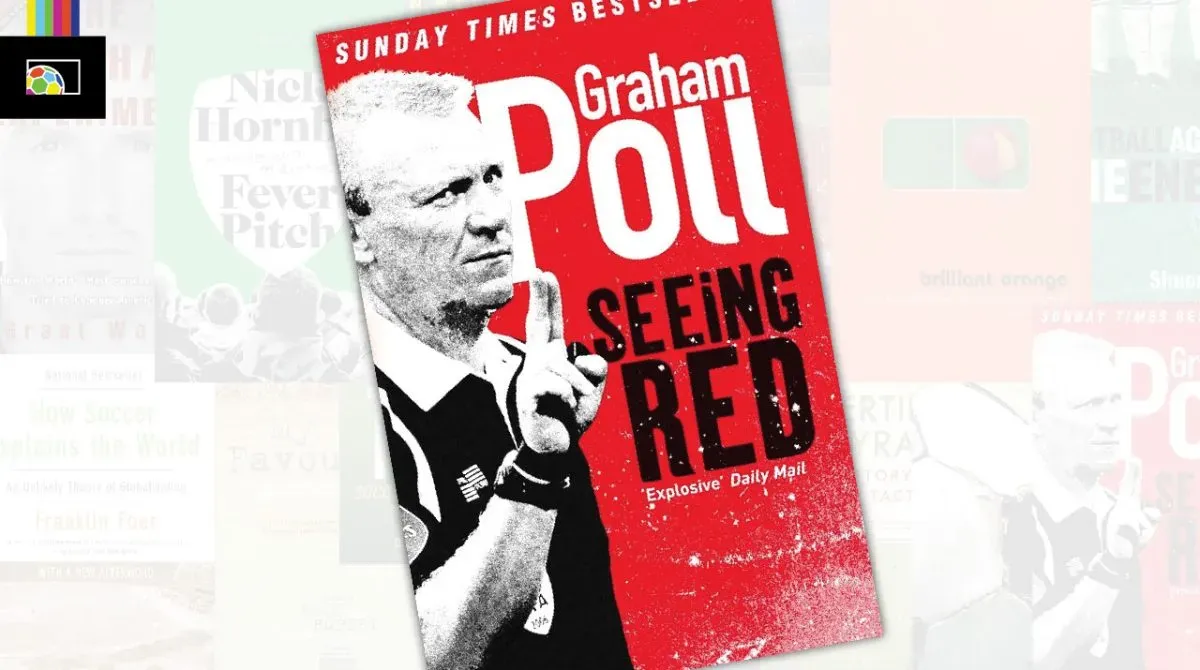
by Graham Poll. A Premier League and international referee with 26 years of combined experience, Graham Poll handled some of the toughest games in soccer history—in total more than 1,500 matches—before his retirement in 2007. In this brilliant, no-holds-barred autobiography, Poll reveals what really goes on between the players in the tunnel before a match and in the dressing room after, and unveils the true nature behind the nicest and the nastiest figures in the game.
Poll also shares private conversations with the likes of Alex Ferguson, Jose Mourinho, Sepp Blatter, and Steve McClaren, and the inside story behind controversial incidents involving Roy Keane, David Beckham, Patrick Vieira, and current England captain John Terry, among others. The infamous 2006 World Cup match—during which he failed to send off a Croatian player after he earned three yellow cards—that brought Poll home early in disgrace and nearly ruined his career is covered as well. Honest and eye-opening, this is a gripping behind the scenes look from one of the beautiful game’s most noted figures.
12. Football Against The Enemy
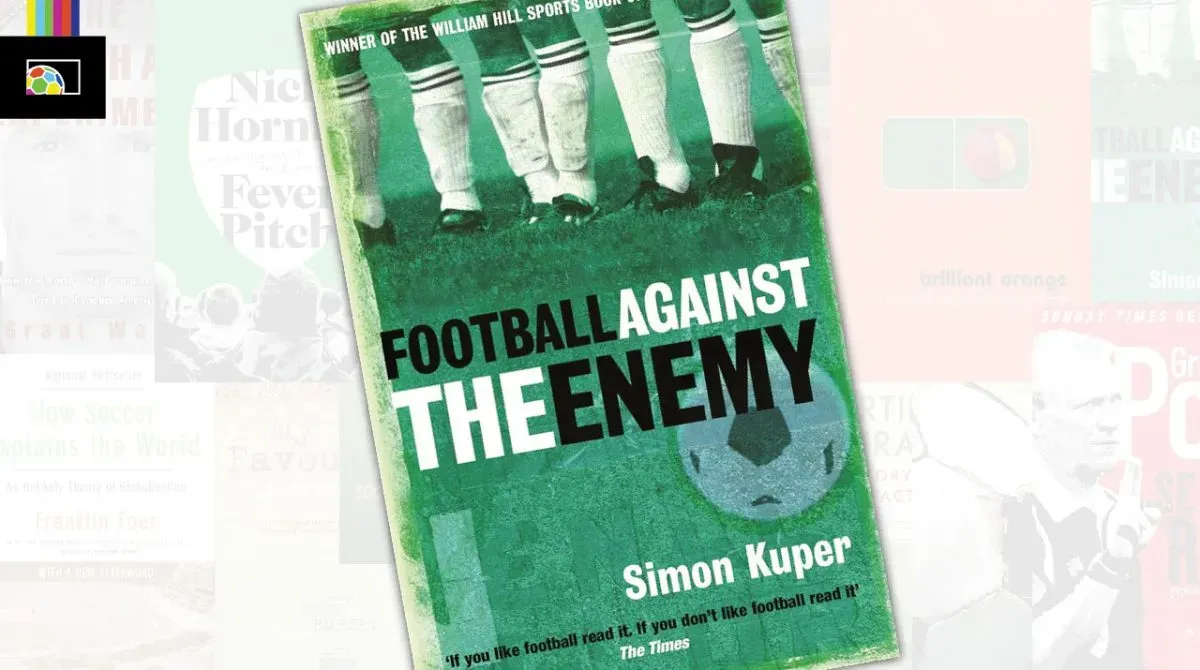
by Simon Kuper. Throughout the world, football is a potent force in the lives of billions of people. Focusing national, political and cultural identities, football is the medium through which the world’s hopes and fears, passions and hatreds are expressed. Simon Kuper travelled to 22 countries from South Africa to Italy, from Russia to the USA, to examine the way football has shaped them. At the same time he tried to find out what lies behind each nation’s distinctive style of play, from the carefree self-expression of the Brazilians to the anxious calculation of the Italians. During his journeys he met an extraordinary range of players, politicians and – of course – the fans themselves, all of whom revealed in their different ways the unique place football has in the life of the planet.
- Buy the book.
- Listen to the podcast interview with Simon Kuper.
13. The Italian Job

by Gianluca Vialli and Gabriele Marcotti. Soccer lies at the heart of popular culture around the world. It is played, watched, written about, and talked to death by millions virtually every day of the year. But how do the characteristics of England and Italy—two of the most passionate soccer playing countries—affect the game in these two nations? Do the national stereotypes of Italians as fervent, stylish lotharios and the English as cold-hearted eccentrics still hold true when they kick a ball around?
For the first time, a player of the first rank—Gianluca Vialli—in conjunction with sportswriter and broadcaster Gabriele Marcotti, tackles this debate head on, and they have invited some of the biggest names to join them. Sir Alex Ferguson, Jose Mourinho, Arsene Wenger, Sven Goran Eriksson, Fabio Capello, and Marcello Lippi, among others, add their not inconsiderable weight to the highest-profile symposium on soccer ever convened. Every aspect of the game is explored, be it tactical and technical or cultural and sociological. Stuffed full of controversial opinions and gripping revelations, this study on the sport takes you on a journey to the very heart of two of the world’s great soccer cultures.
14. Among The Thugs
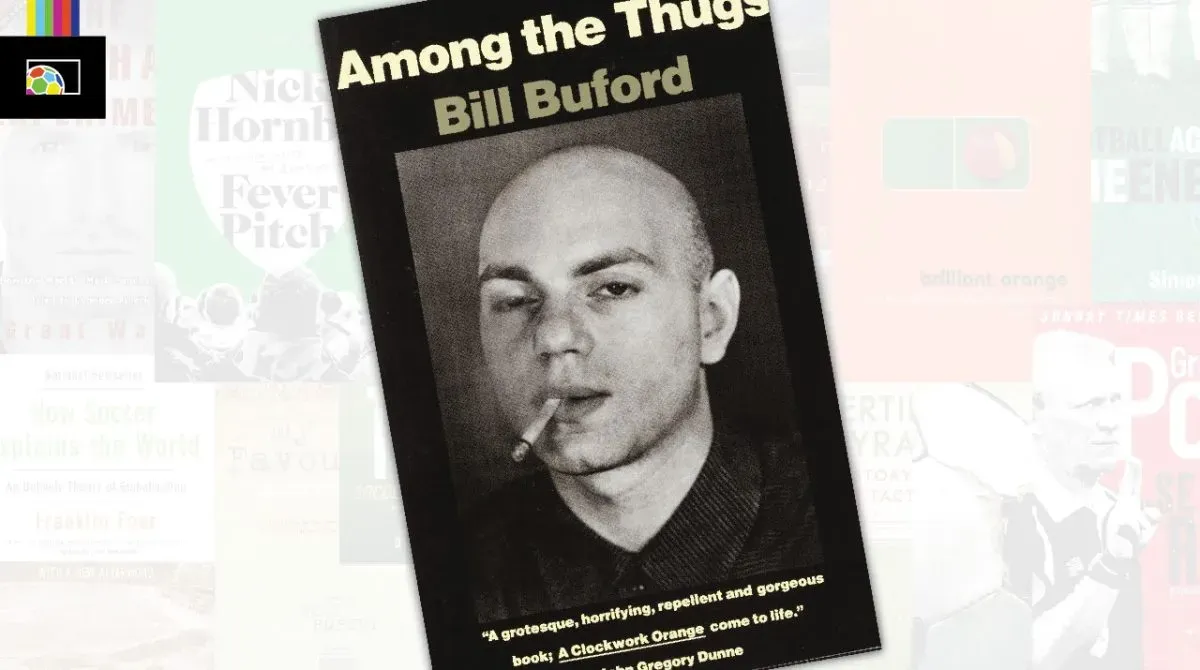
by Bill Buford. The American-born editor of the British literary magazine Granta presents a horrifying, searing account of the young British men who turn soccer matches at home and abroad into battlegrounds and slaughterhouses. Buford, resident in England for the last 15 years, set out to get acquainted with these football supporters–as their fellow Britons call them in more measured moments–to learn what motivates their behavior.
He discovered a group of violent, furiously nationalistic, xenophobic and racist young men, many employed in high-paying blue-collar jobs, who actively enjoy destroying property and hurting people, finding “absolute completeness” in the havoc they wreak. He also discerned strong elements of latent homosexuality in this destructive male bonding. Following his subjects from local matches to contests in Italy, Germany and Sardinia, Buford shows that they are the same wherever they go: pillaging soldiers fighting a self-created war.
15. Morbo
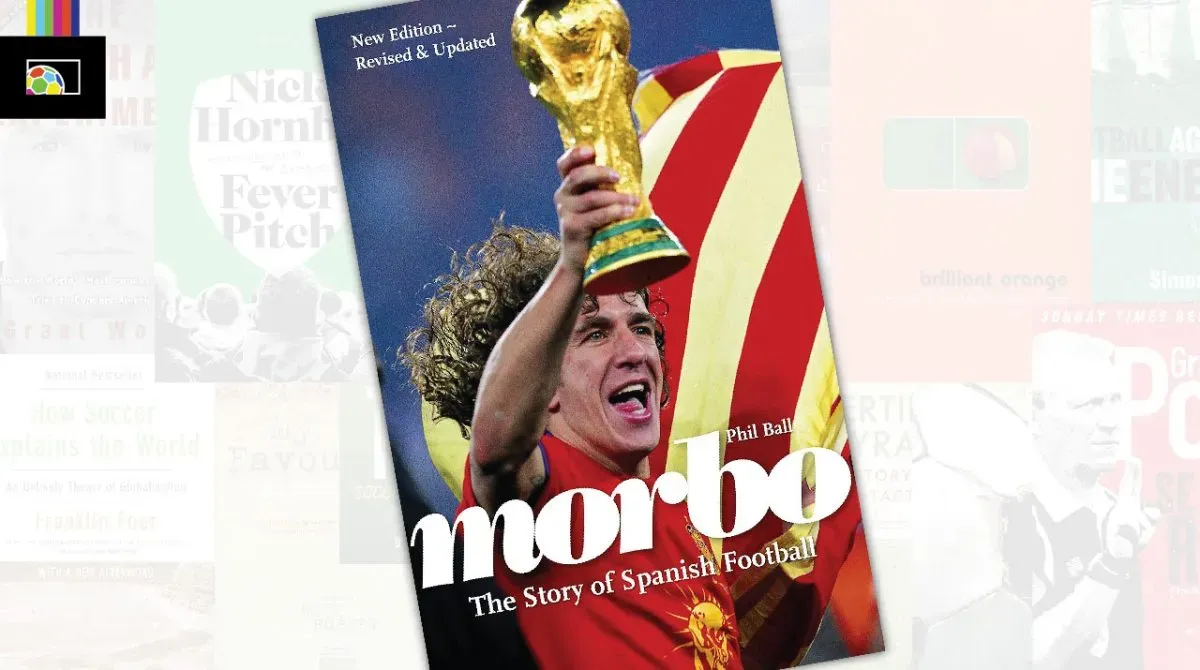
by Phil Ball. English writer Phil Ball has put the history of Spanish football into the context of the epomymous Morbo. Hard to pin down in translation (though the author manfully spends a chapter trying to explain the term in its fullest sense), “morbo” encapsulates the fierce rivalry across a club scene fragmented by history, language and politics. The bitter feeling between Barcelona and Real Madrid has, of course, been well-documented elsewhere. Here that famous rivalry is only one component of a landscape of antagonism. In particular, the Basque country in the north-west and Seville in the south both provide breeding grounds for a healthy portion of “morbo”, and receive Ball’s attention accordingly.
The narrative captures the essence of that feeling perfectly, without failing to inform on a historical basis. A splendid chapter traces the ancestry of football in Spain back to the labourers in the English-owned copper mines in Huelva, Andalucia. While Spanish club football has always had its stars, from Di Stefano to Cruyff and Butragueno through to Raul and Luis Figo today, Ball shows that there is a greater force running in its lifeblood. Yet still there remains a paradox; he analyses the historical under-achievement of the Spanish national side in major international tournaments.
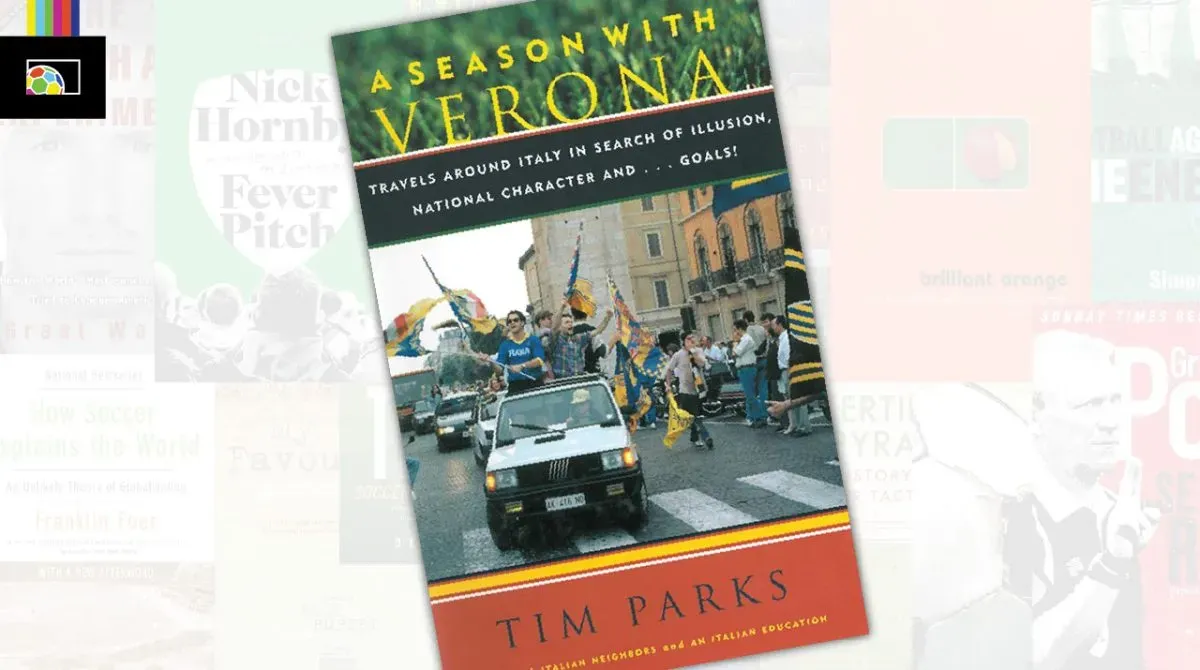
by Tim Parks. The book sets a daunting task of analyzing the life and mindset of a soccer fan in the wake of Nick Hornby’s runaway hit, Fever Pitch, which is to many one of the finer books on soccer. He takes the reader on a tour of Italy, supporting his adopted home team of Hellas Verona through a season in Serie A. Parks in part sets out to examine the Italian national consciousness through the lens of Verona supporters. “The north-east of Italy, Verona in particular, is stigmatized as irretrievably racist.
It is also considered bigoted, workaholic, uncultured, crude and gross.” Hellas Verona have prided themselves on never having a black player on the pitch (until recently). Their fans shout monkey chants whenever an opposing black player touches the ball. It’s a disgraceful part of soccer behavior that is well worth exploring, and this is when Parks is at his best. “I suggest… that the frequent talk about `defeating’ racism on the terraces is a mistake.
17. Soccer In A Football World
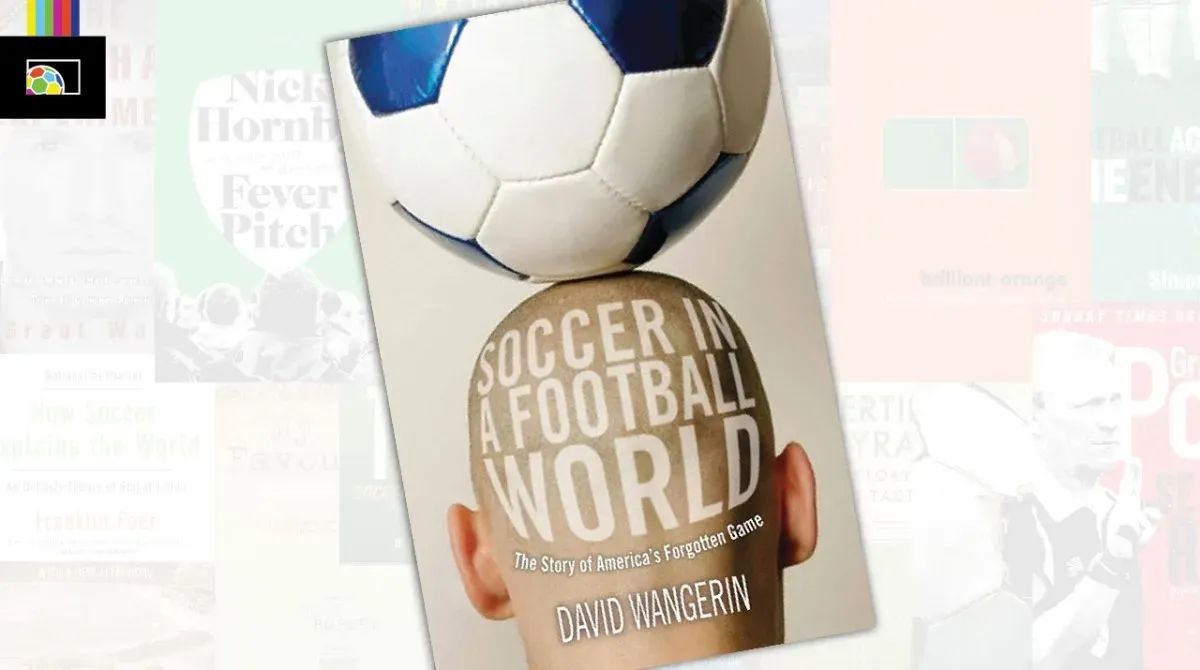
by David Wangerin. In 1987, sick of defending an “un-American” activity, soccer-mad Wisconsinite Wangerin immigrated to England. After many years of thinking that the U.S. “did not deserve” the game, his mixed feelings led him to research the States’ surprising history with the sport, which has often included plenty of drama if not always plenty of fans. In thorough fashion, Wangerin moves from past to present, covering our unique terminology (why do we call it soccer when the world calls it football?); peculiar rules (we have often played it our own way); governing bodies and leagues (there have been many); World Cup triumphs and missteps (many more of the latter); the ongoing fortunes of Major League Soccer; and, above all, the culture surrounding the game.
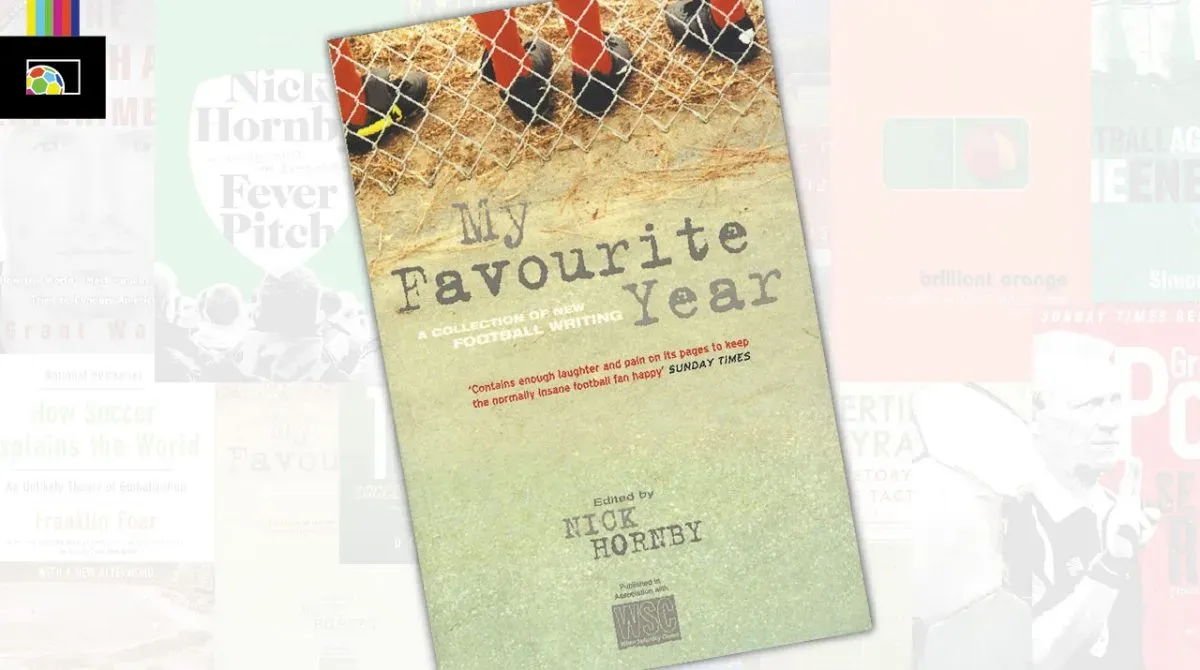
edited by Nick Hornby. Roddy Doyle’s account of the Republic of Ireland’s triumphant journey through Italia ’90 is just one of the many first-class pieces in this anthology of original football writing. Contributors include: Roddy Doyle, Harry Pearson, Harry Ritchie, Ed Horton, Olly Wicken, D.J. Taylor, Huw Richards, Nick Hornby, Chris Pierson, Matt Nation, Graham Brack, Don Watson and Giles Smith. ‘A new kind of football writing developed – passionate, disrespectful, self-mocking, yet steeped in personal bias. In book form, young writers such as Nick Hornby and Pete Davies became to the New Football Writing what Tom Wolfe and Hunter S. Thompson had been to the New Journalism’

by Grant Wahl. With unprecedented access to the Galaxy and one-on-one interviews with Beckham, veteran Sports Illustrated writer Grant Wahl focuses on the inner circle of the experiment: Beckham, Galaxy leading scorer Landon Donovan, Simon Fuller, controversial former coach Ruud Gullit, outspoken former Galaxy president Alexi Lalas, and Mrs. Victoria “Posh Spice” Beckham.
Wahl takes readers behind the scenes, on the road with the team and inside the locker room, to reveal just what happened on and off the field when the most renowned player in the world left the glamour of European soccer to play in a country that has yet to fully embrace the sport. We find out what his teammates really think of their superstar captain, who was calling the shots behind the scenes, how Beckham’s management conducted a shadow takeover of the Galaxy organization, and if the team plans to embrace him–or not–when he returns from AC Milan for the 2009 season.
20. The World is a Ball: The Joy, Madness, and the Meaning of Soccer
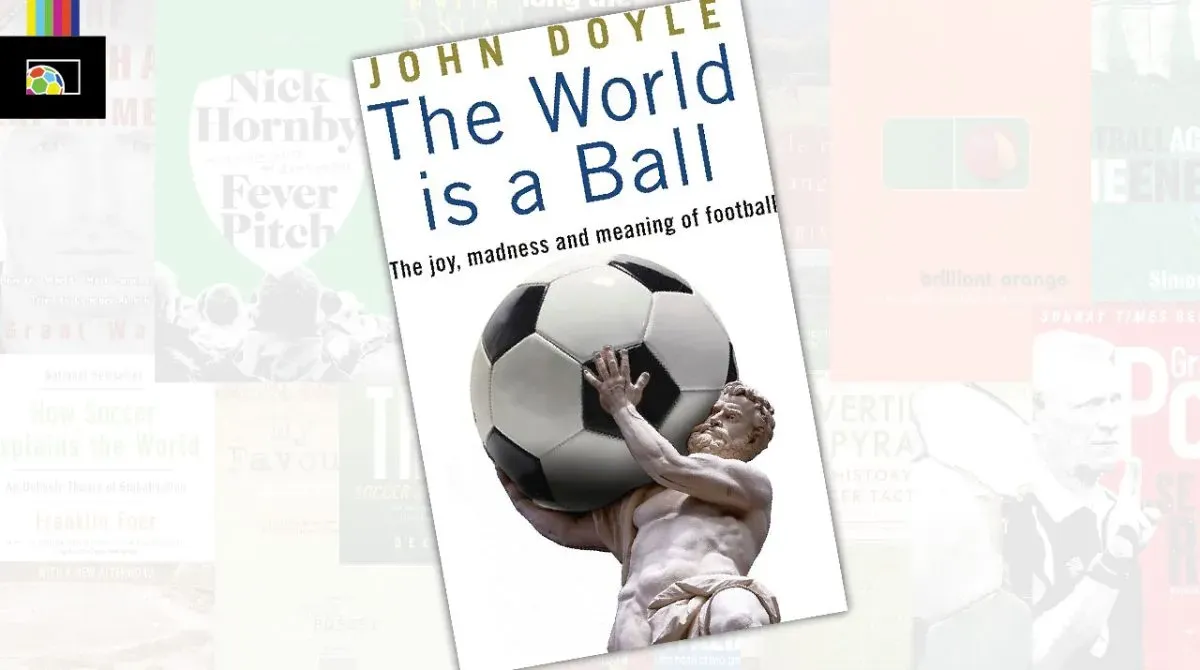
by John Doyle. John Doyle’s book The World is a Ball: The Joy, Madness, and the Meaning of Soccer is an account of one man’s travels around the world following the beautiful game of soccer. The journey begins in 2002 and takes readers through European qualifying and World Cup matches. Doyle not only gives a recap of the contests, but he also puts the reader in the stadium to experience the emotion and pageantry that goes along with international soccer. Through his travels and encounters, the Canadian author tries to come to some understanding why the game of football is such a passion around the globe.
Are there any books that aren’t listed above that you feel should be added to the list? Click the comments link below and share your opinion.
PS — If you’re the owner of an Amazon Kindle, the e-reader, be sure to subscribe to World Soccer Talk on the Kindle so you can read every new post.














